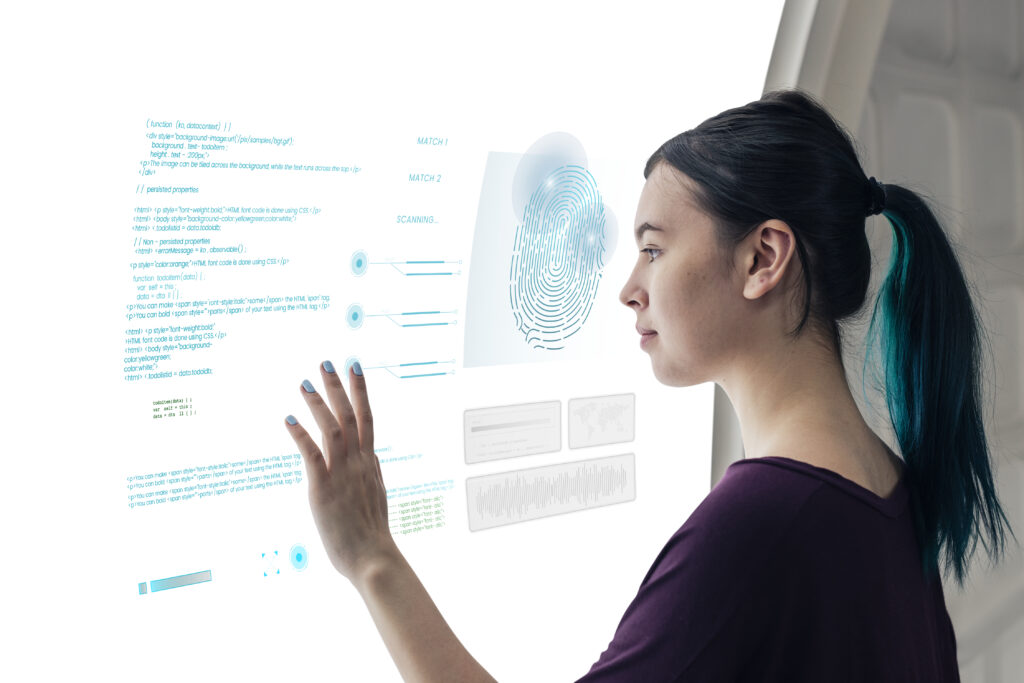The Future of Human Detection

Human detection technology has seen remarkable advancements in recent years, fueled by innovations in artificial intelligence (AI), machine learning (ML), and sensor technology. From security and surveillance to healthcare and retail, the ability to accurately detect and analyze human presence and activity is revolutionizing various industries.
Understanding Human Detection Technology What is Human Detection?
Human detection refers to the ability of systems to identify and recognize human presence and activities. This technology utilizes various sensors and algorithms to detect physical characteristics such as body heat, motion, facial features, and more. Human detection systems can be divided into several categories:
Motion Detection: Uses infrared or motion sensors to detect movement.
Facial Recognition: Identifies individuals based on facial features.
Body Recognition: Detects the presence and posture of a human body.
Voice Recognition: Identifies individuals based on voice patterns.
Key Technologies
- Artificial Intelligence and Machine Learning
AI and ML algorithms are at the core of modern human detection systems. These technologies enable systems to learn from vast amounts of data and improve their accuracy over time. Deep learning, a subset of ML, uses neural networks to recognize patterns and features, making it particularly effective for facial and body recognition.
- Computer Vision
Computer vision technology allows machines to interpret and make decisions based on visual input. By processing images and videos, computer vision systems can detect human presence, track movements, and even analyze behaviors.
- Infrared and Thermal Imaging
Infrared and thermal sensors detect heat signatures emitted by human bodies. These sensors are especially useful in low-light conditions or where traditional cameras may not be effective.
- LIDAR and Radar
LIDAR (Light Detection and Ranging) and radar technologies use light and radio waves, respectively, to detect objects and their distances. These technologies are increasingly used in applications like autonomous vehicles and security systems to detect human presence.
Applications of Human Detection Technology
- Security and Surveillance
One of the most widespread applications of human detection technology is in security and surveillance. Advanced systems use AI and computer vision to monitor public spaces, detect suspicious activities, and identify individuals. These systems enhance public safety by enabling rapid response to potential threats.
- Healthcare
In healthcare, human detection technology is transforming patient monitoring and care. Wearable devices equipped with sensors can detect falls, monitor vital signs, and alert healthcare providers in case of emergencies. AI-driven systems in hospitals can track patient movements and ensure they receive timely assistance.
- Retail and Customer Service
Retailers are using human detection technology to enhance customer experiences and optimize operations. Facial recognition systems can identify VIP customers, track shopper movements, and provide personalized recommendations. In addition, motion detection and heat mapping help retailers understand customer behavior and improve store layouts.
- Autonomous Vehicles
Self-driving cars rely heavily on human detection technology to navigate safely. LIDAR, radar, and computer vision systems detect pedestrians, cyclists, and other vehicles, enabling autonomous vehicles to make informed decisions and avoid collisions.
- Smart Homes and Buildings
In smart homes and buildings, human detection technology enhances security, energy efficiency, and convenience. Motion sensors and facial recognition systems control access, adjust lighting and temperature, and even customize entertainment options based on who is present.
- Workplace Safety
In industrial and construction settings, human detection technology improves safety by monitoring worker movements and ensuring compliance with safety protocols. AI-driven systems can detect hazardous behaviors and alert supervisors to prevent accidents.
Emerging Trends in Human Detection
- Integration with Internet of Things (IoT)
The integration of human detection technology with IoT devices is creating smarter and more responsive environments. IoT-connected sensors and cameras can communicate with each other, providing real-time data and enabling automated responses. For example, a smart building can adjust lighting, heating, and security systems based on the presence of occupants.
- Edge Computing
Edge computing involves processing data closer to the source, reducing latency and improving efficiency. In human detection, edge computing allows for faster and more reliable processing of sensor data, making real-time detection and response possible.
- Enhanced Privacy and Security
As human detection technology becomes more pervasive, there is a growing emphasis on enhancing privacy and security. Technologies such as differential privacy, anonymization, and secure multi-party computation are being developed to protect individual data while still enabling effective detection.
- AI and ML Advancements
Ongoing advancements in AI and ML are improving the accuracy and capabilities of human detection systems. New algorithms and models can better handle complex scenarios, such as detecting multiple people in crowded environments or recognizing subtle human behaviors.
- Multimodal Detection
Combining multiple detection methods, such as visual, thermal, and auditory sensors, creates more robust and accurate systems. Multimodal detection can compensate for the limitations of individual sensors, providing a comprehensive understanding of human presence and activity.
Ethical and Privacy Considerations
While human detection technology offers numerous benefits, it also raises important ethical and privacy concerns. As these systems become more integrated into daily life, addressing these issues is crucial to ensuring responsible use.
Privacy Concerns
The use of facial recognition and other detection technologies can lead to privacy invasions if not properly regulated. Unauthorized surveillance and data collection can result in the misuse of personal information. Ensuring that individuals are aware of and consent to being monitored is essential.
Bias and Fairness
AI and ML systems can inherit biases present in their training data, leading to unfair or discriminatory outcomes. It is important to develop and implement algorithms that are transparent, fair, and free from bias to ensure equitable treatment of all individuals.
Accountability and Transparency
Clear guidelines and regulations are needed to govern the use of human detection technology. Establishing accountability and transparency in how data is collected, stored, and used can help build trust and prevent abuse.
Security Risks
The widespread deployment of human detection systems increases the potential for cyberattacks and data breaches. Ensuring robust cybersecurity measures are in place is critical to protecting sensitive information and maintaining the integrity of detection systems.
Conclusion
The future of human detection technology is bright, with advancements in AI, ML, and sensor technology driving significant improvements in accuracy and functionality. From enhancing security and healthcare to revolutionizing retail and autonomous vehicles, the applications of human detection are vast and varied. However, as this technology becomes more integrated into our lives, it is essential to address the ethical and privacy challenges it presents.
By prioritizing transparency, fairness, and security, we can harness the full potential of human detection technology while protecting individual rights and fostering trust. As we move forward, continued innovation and responsible implementation will be key to realizing a future where human detection technology enhances our lives in meaningful and positive ways.
